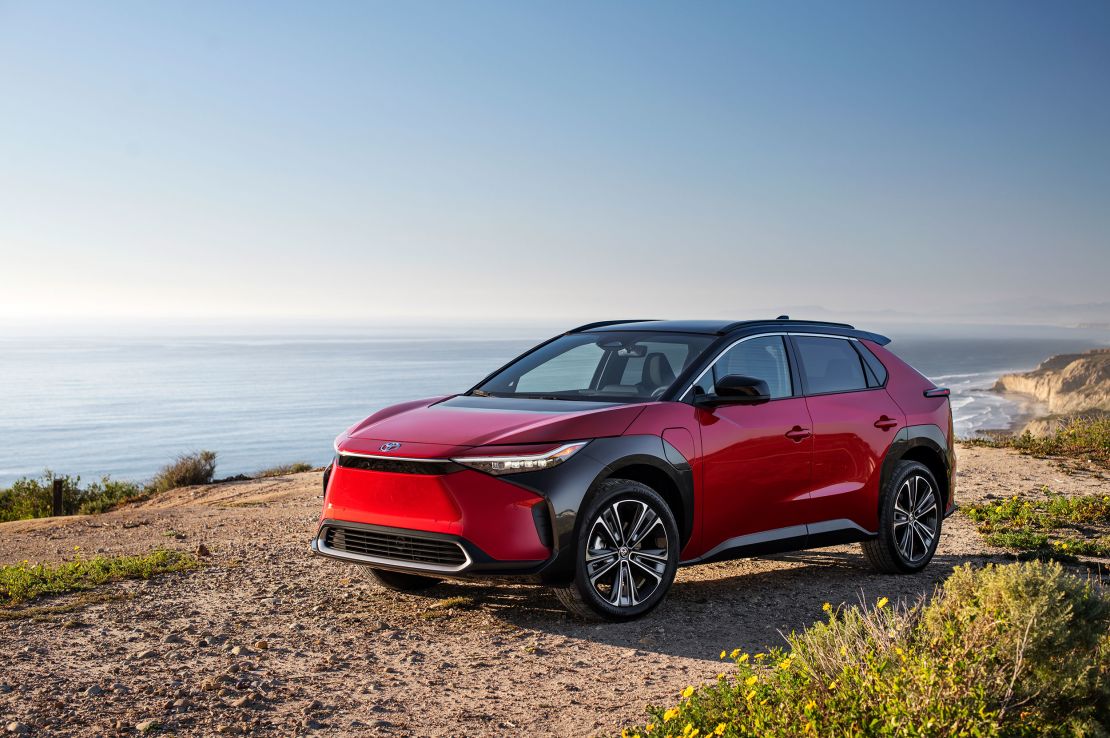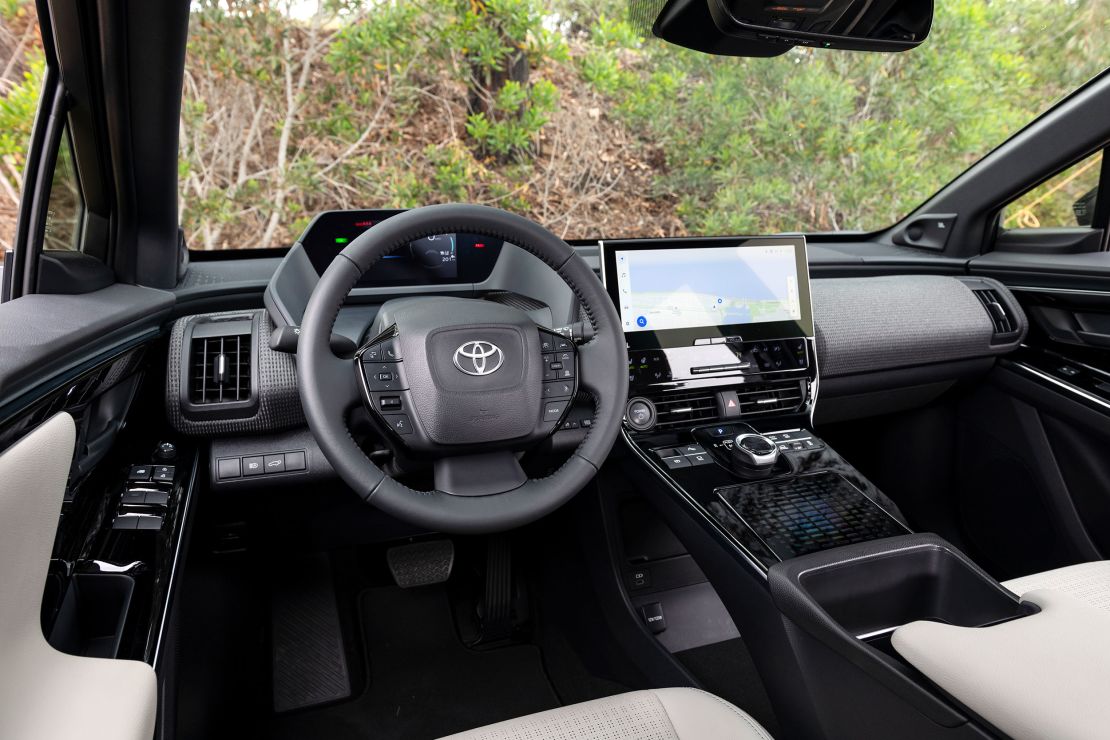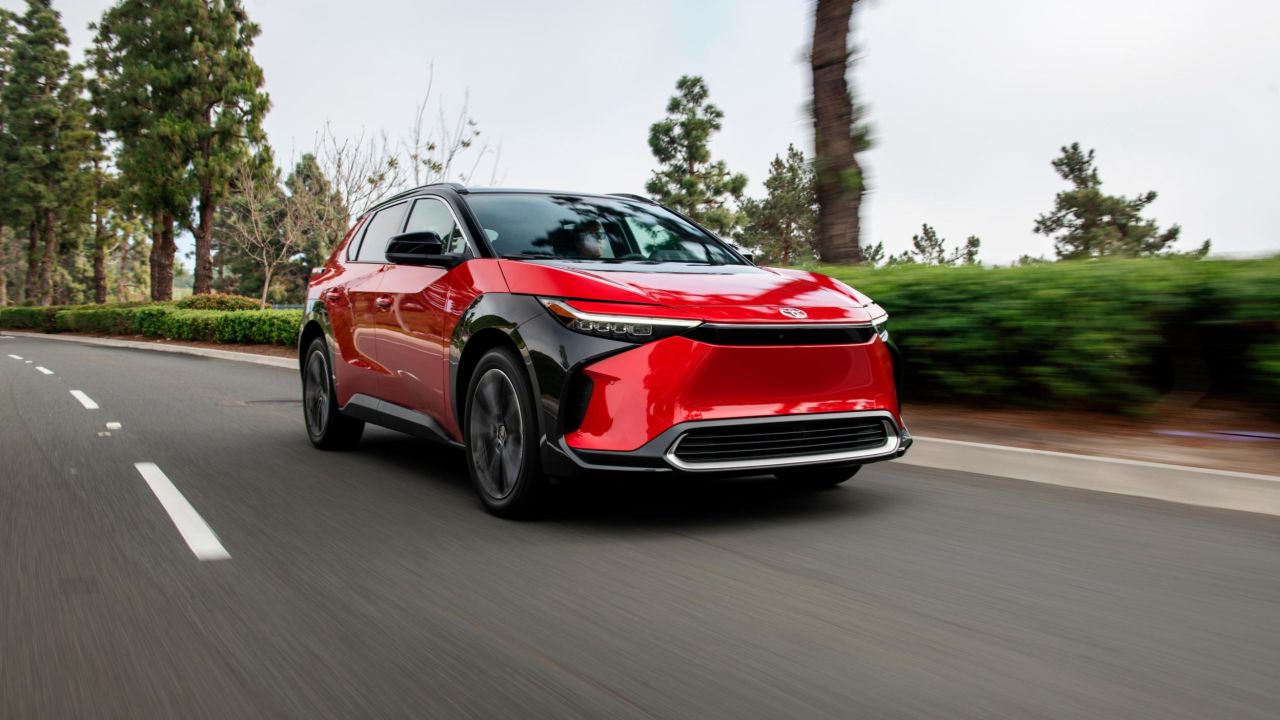Electric vehicles have reached a key milestone on the road to becoming ubiquitous. That’s because Toyota, America’s best-selling automaker, is now selling one.
You might be surprised to learn that Toyota hasn’t, before now, sold a widely available, real electric vehicle in America. But they have not. Not really. Toyota, a pioneer in hybrids with the Prius — the name means “To go before” in Latin — hasn’t been “going before” with electric vehicles. Tesla, Nissan, General Motors, Ford, Volkswagen, Audi, BMW, Hyundai, Kia and others have all beat Toyota to market with electric vehicles.
There were two generations of Toyota Rav4 EVs, but those weren’t available nationwide and, besides, they were really just regular Rav4 SUVs fitted with batteries and electric motors. The second generation of Rav4 EVs had Tesla, not Toyota, stuff inside. Toyota has long had a more conservative view of electric vehicles than some other automakers that have pledged to go all-in, or nearly so, on EVs. Toyota isn’t pledging to make nothing but EVs by any set date.

The BZ4X was designed from the outset as an electric crossover SUV. It’s not some other vehicle fitted with batteries, a technique that usually results in a sub-standard products. This SUV was engineered in partnership with Subaru, which offers its own electric SUV, the Solterra. Both are based on the same engineering and they even look almost identical.
As with many Toyotas, the BZ4X has some aggressive design elements on the outside that belie a refreshingly mundane experience on the inside. Toyota, the US’ best-selling automaker last year, has earned its place by giving customers what they want. And what Americans mostly want is not to be bothered. There’s nothing in this vehicle that most cr owners would not be able to quickly figure out and adapt to.
While some other EV makers aim for brain-crushing acceleration, the BZ4X takes about seven seconds, give or take, to get from zero to 60 miles an hour. And honestly, that’s just fine. It’s fairly quick, actually. No one really needs to accelerate faster than that. A little over 200 horsepower from the BZ4X’s electric motor or motors, depending on whether you get all-wheel-drive or not, is also perfectly decent and reasonable.
Other EVs can give you over 300 miles of range, maybe even 400 miles, on a single charge, but the BZ4X can give you up to 252 miles of range on a charge. Again, that’s fine. Most people drive fewer than 40 miles on an average day, and most buyers will get a charger installed in their home, if they can, before buying an electric vehicle. That means they’ll have more than 200 miles worth of batteries they’re carrying around all the time just for the occasional long trip. Why carry more?
I liked the BZ4X’s all-around fine and normal demeanor and even found it refreshing. It has a handy and straightforward volume knob. The BZ4X has a big touchscreen in the middle because everything has big touchscreens now. But it’s not one of these enormous pixel-platters the size of a TV that makes you stretch your arm out to reach every part.
There are two things that really stand out on the BZ4X: the fenders and the ride quality. The suspension on the BZ4X is surprisingly stiff and bouncy, much more than I would expect from a Toyota. Someone explained to me later that this was a result of engineers aiming for a responsive and fun driving feel, which requires firmer suspension, especially in a vehicle with heavy batteries and high ride height. That’s fine except that I really doubt anyone will buy the BZ4X for fun. It drives nicely, and electric vehicles, with their quick, responsive motors, lend themselves to fun. I would just think, given a choice between a smooth ride and excitement on a curvy road, most Toyota crossover buyers rather be cosseted. Besides, I’ve driven a few fun electric crossovers that didn’t bounce me around like this.

In one of the oddest car design choices in recent memory, the BZ4X’s fenders, the body panels around the wheels, are black. This comes standard on all BZ4X models and you can’t unchoose it. The idea was to make the SUV stand out from Toyota’s gas-powered vehicles, I was told. (The Subaru Solterra has a similar design feature, but its fenders are molded in dark gray plastic while the Toyota’s are shiny.) I predict this awkward flourish won’t last and that, within a model year or two, you’ll be able to get your BZ4X in all one color.
The BZ4X is initially available only in Toyota’s higher-end XLE and Limited levels, which include lots of features and options. Prices start at around $42,000 for a front-wheel-drive model. Those who buy soon will be able to take advantage of an available $7,500 tax electric vehicle tax credit. Each automaker is allowed a limited number of EV tax credits. They begin to phase out a few months after a given automaker’s 200,000th credit. In what seems like a cruel cosmic joke, Toyota is about to run out of credits shortly after launching its first electric vehicle. That’s because those EV tax credits also apply to plug-in hybrids, and Toyota has sold lots of those. But in exchange for getting that tax credit, I hope you like the black fenders.








